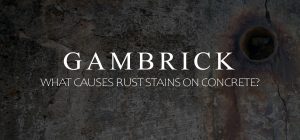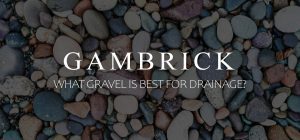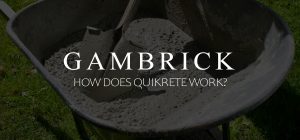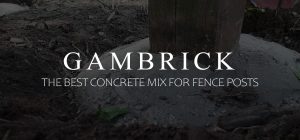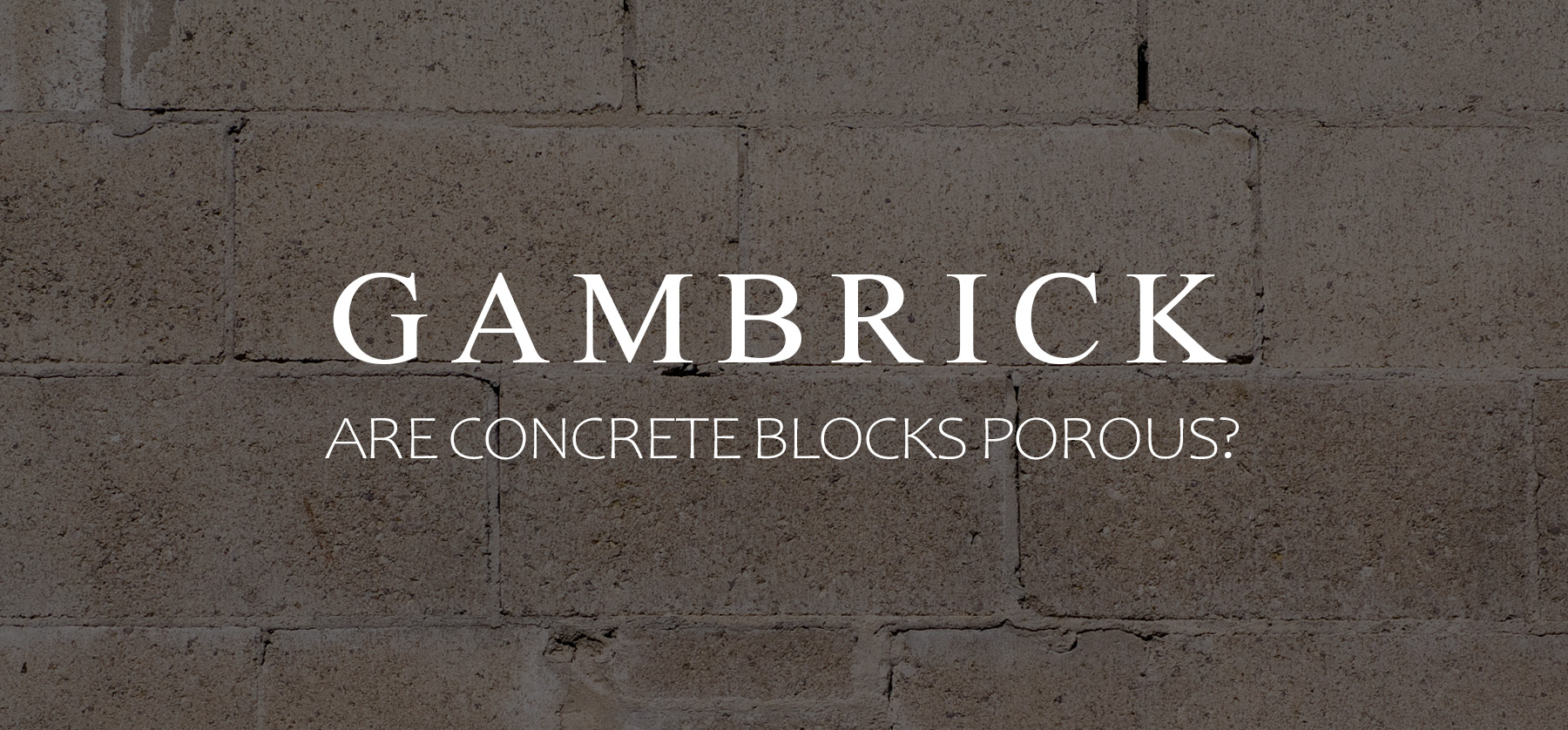
Are Concrete Blocks Porous?
Concrete blocks are extremely porous. They’re made from Portland Cement and aggregates mixed with water. Wet concrete is poured into a form which creates the block. Different forms create various sizes and shapes. As the wet concrete dries and hardens, pores are formed throughout the block. These pores give the block its rough, gritty texture. They also absorb water like a sponge and potentially cause cracks and leaks. If your blocks crack, repair them immediately with a DIY crack filler to prevent leaks and future damage. Concrete blocks are more porous than other masonry materials like brick, limestone, granite, stone and poured concrete.
Concrete blocks are also known as a concrete masonry unit (CMU). The most common mixture contains dry Portland cement, gravel, sand, and water. Lightweight blocks are made by substituting gravel and sand with clay, shale, or slate. Cinder blocks are a form of concrete blocks that are weaker and more heat resistant. But they’re also more porous.
Concrete blocks come on a pallet. How many blocks there are per pallet depends on the size and type of block you order.
I’ve been a mason for over 25 years and can tell you firsthand that the most common blocks used in construction are hollow and contain voids called cells. This helps reduce weight, makes them easier to install and provides a place for vertical rebar and poured concrete.
Concrete blocks are fire resistant, not 100% fireproof. But they’re much better than wood construction and used to build fire walls in commercial construction.
On average, cells make up more than 50% of a blocks mass. When they’re left hollow they can fill with water which makes leaks easier, so its best to fill them solid if you’re building a foundation wall.
What Makes A Concrete Block Porous
Concrete blocks are porous because of the materials they’re made of.
First, a dry concrete mix is made with Portland cement, sand and aggregate. The sand used is course and the gravel is fine. Once all the dry ingredients are mixed together into a powder, water is added which forms wet concrete paste.
The wet concrete is then poured into molds shaped like blocks. There are a variety of concrete block molds which create different shapes and sizes.
As wet concrete dries and hardens, water evaporates out of its surface. This evaporation creates pores and tiny tubes throughout the block.
There are several factors during manufacturing that can effect how porous a concrete block becomes.
- Aggregate size.
- Aggregate type.
- Ratio of water to Portland cement. More water means a weaker block with more pores.
- Additional ingredients.
- Type of cement used. Some blocks, like cinder, don;t use much Portland.
- Manufacturing requirements. Some blocks are intentionally made with more or less pores.
A block typically cures for about 24 hours at an average temperature of around 100 degrees Fahrenheit during manufacturing. This is long enough for the black to harden and grow strong enough to be removed from the mold. However concrete blocks will continue to cure and grow strong for about 30 days.
It’s important to let blocks fully cure before you install them. Placing heavy loads onto a block that’s not fully cured can cause hairline stress cracks. These cracks in additions to the blocks pores can result in leaks.
Will Concrete Blocks Hold Water?
Concrete blocks have hollow sections inside called cells.These hollow cells make the blocks lighter, easier to work with an provide a place for vertical rebar and concrete to be poured.
Blocks are porous which means they’ll absorb water. If the cells are filled solid there’s no place for water to rest. However when concrete block are left hollow, water can build up inside the cells. So hollow concrete blocks can hold water. But hollow blocks that are completely filled solid with concrete won’t.
When concrete block walls are built the individual blocks are held together with mortar. Blocks typically have mortar on both sides and the top and bottom of the block. Mortar joints are usually about 3/8 inch in size.
A common area where you’ll find cracks in a concrete block wall are the joints. If a joints cracks, water can penetrate through the crack and fill up a hollow cell. If you have a block wall that has hollow cells, it’s important to water proof the blocks. This includes filling small cracks with silicone and medium to large cracks with fresh mortar.
You can also waterproof an entire concrete block wall with flashing, tar, Drylok and/or elastomeric masonry paints.
Should Concrete Blocks Be Sealed?
Concrete blocks are porous and hold water which means they should be sealed with a water repellent sealer to prevent leaks.
Sealing concrete blocks can help prevent damage and deterioration caused by water absorption. This includes cracks, spalling, pitting, freeze-thaw, salt damage, mold growth, and efflorescence.
I don’t recommend a single solution when sealing concrete blocks. A combination of methods usually works best.
First, the exterior of the block should be sealed. When we build a new block foundation it includes a then cement parge coat over the block. Then we apply tar on any block that’s below the surface. The combination of cement and tar helps keep water out of the blocks.
Second, we also seal the inside of a basement with a paint like Drylok. If water works it’s way into the block it’ll be stopped by the Drylok.
Third, small cracks can be sealed with silicone. Large to medium size cracks should be filled with new mortar.
In addition to sealing the blocks, you should pay attention to drainage. One of the biggest causes of foundation leaks is poor drainage. Make sure you’re downspouts and grading doesn’t run into the block walls.
What Happens When Concrete Blocks Get Wet?
In most cases when a concrete block gets wet it dries out. Concrete blocks are very porous and absorb water. But they also breathe and dry quickly. The bigger problem is when they;re exposed to large amounts of water for an extended period of time or when they’re hollow. A hollow concrete block can hold water inside it’s cells for a long time.
Over time, water can cause damage to a concrete block wall’s structure and surface coatings. This includes the wall’s cement parge coat or coverings like brick or stone.
Structural damage includes cracked or loose mortar joints and blocks. Cracked or loose mortar joints can be repaired by removing the damaged mortar and replacing it with new material. However, damaged blocks will need to be removed and replaced.
Eventually, water damage can get so bad that block walls can shift. This can mean whole wall sections will need to be cut out and replaced.
You can expect your blocks to get wet which isn’t usually a problem. However long term exposure to large amounts of water can damage the blocks.
Can Water Pass Through Cinder Block?
Cinder blocks are a more porous form of a standard concrete block. They have larger pores that the standard concrete block but are a bit weaker. Because of there extremely porous structure, water can pass right through them.
In fact water can pass through both concrete and cinder blocks. To form a block, wet concrete is poured into a mold. As it dries, water used to mix the concrete evaporates out. This creates a structure filled with pores and tiny tubes. Because of all these tubes and pores, water can pass right through the block and into your basement.
To prevent water passing through a cinder block, it should be sealed from the outside. This usually includes a thin cement coat, called a parge coat and a layer of tar.
Then from the inside you can seal concrete blocks with a paint like Drylok.
Can You Waterproof Concrete Blocks
Concrete blocks are highly porous and absorb water. In many cases water can pass right through the block and into a basement or crawl space. In some basements you may notice wet block walls. This is usually a sign of ground water penetrating through them.
The porous structure of concrete blocks can be dealt with using several waterproofing techniques on the exterior surface of the blocks.
These include:
- Silicones: Used to fill small size cracks.
- Siloxanes: Drylok paint.
- Elastomeric Coatings: Masonry paints that allow the block to breathe.
- Tar: Used primarily to waterproof below the surface blocks.
- Membranes: Peel and stick flashing tape.
Each of these coatings should be applied to the exterior face of the block. This prevents water from absorbing into the blocks pores. However elastomeric coatings and Drylok can also be applied to the inside surface of the block. They can help prevent water inside the block from penetrating into the basement.
Before concrete blocks walls are waterproofed they should be free of damage. This is easy if the wall is new, but if you’re waterproofing an older block wall make sure to thoroughly inspect it first. Fill small cracks with silicone and medium to large cracks with mortar.
If you have major damage or large cracks, whole blocks may need replacement. Cut or break the damaged block out and install a new one.
Once all your repairs are done, clean the blocks and apply your waterproofing.
For an in depth step by step guide on how to waterproof concrete blocks click here.
Summary: Are Concrete Blocks Porous?
Concrete blocks are extremely porous. They’re made from Portland Cement and aggregates mixed with water. Wet concrete is poured into a form which creates the block. Different forms create various sizes and shapes. As the wet concrete dries and hardens, pores are formed throughout the block. These pores give the block its rough, gritty texture. They also absorb water like a sponge and potentially cause cracks and leaks. If your blocks crack, repair them immediately with a DIY crack filler to prevent leaks and future damage. Concrete blocks are more porous than other masonry materials like brick, limestone, granite, stone and poured concrete.
Concrete blocks are also known as a concrete masonry unit (CMU). The most common mixture contains dry Portland cement, gravel, sand, and water. Lightweight blocks are made by substituting gravel and sand with clay, shale, or slate. Cinder blocks are a form of concrete blocks that are weaker and more heat resistant. But they’re also more porous.
Concrete blocks come on a pallet. How many blocks there are per pallet depends on the size and type of block you order.
I’ve been a mason for over 25 years and can tell you firsthand that the most common blocks used in construction are hollow and contain voids called cells. This helps reduce weight, makes them easier to install and provides a place for vertical rebar and poured concrete.
Concrete blocks are fire resistant, not 100% fireproof. But they’re much better than wood construction and used to build fire walls in commercial construction.
On average, cells make up more than 50% of a blocks mass.
If you have any questions about concrete blocks email or leave a comment below.

John Mazzuca | About | More Posts |
Custom Home Builder
John Mazzuca is a custom home designer and builder at Gambrick with over 25 years experience in the construction industry. John has designed, built and/or remodeled hundreds of homes, small buildings, and commercial projects. He writes about business, real estate, home building, and household electronics. His work has been featured in Fox Business, Better Homes & Garden, House Beautiful, and more.
